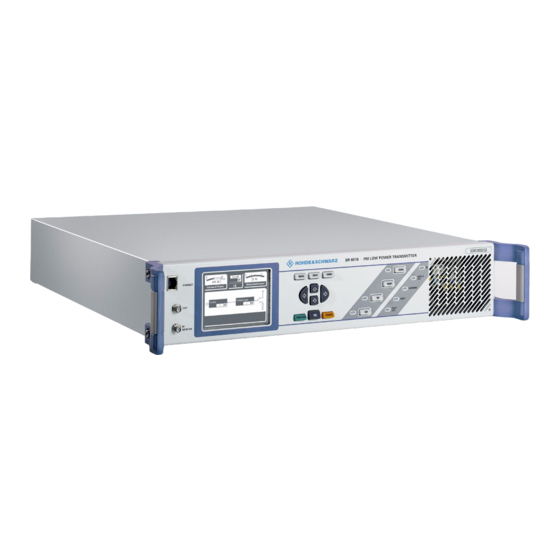
Table of Contents
Advertisement
Quick Links
System Manual
R&S
VHF, Solid-State Low-Power
All activities connected with installing, starting up, operating, maintaining,
troubleshooting, and servicing the described system must be carried out by specialist
technicians only.
Printed in Germany
5300.9677.72 -4
Broadcasting Division
®
SR8000 – FM Transmitter
- 0.1 -
Advertisement
Chapters
Table of Contents








Need help?
Do you have a question about the SR8000 Series and is the answer not in the manual?
Questions and answers
Replaced the blown MOSFETs but fault alarm cannot go out. What could be the cause?
The fault alarm on a Rohde & Schwarz SR8000 Series could remain active after replacing the blown MOSFETs if:
1. The voltage supply is still outside tolerance (Supply Unit Status shows "Error").
2. The FPGA was not loaded (signal processing not functioning).
3. The EEPROM has a CRC error (data inconsistency).
4. A PLL in the RF section is unlocked.
5. The CF card data could not be read correctly.
6. A replaced fuse blows again, indicating further internal faults.
7. The automatic circuit breaker trips again.
8. Damage exists in the power supply or connected circuits that were not repaired.
In such cases, the device may need to be taken out of service and replaced.
This answer is automatically generated